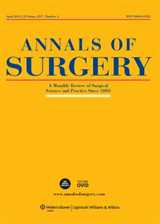Ann Surg:IASLC/ATS/ERS新版腺癌分类系统可对I期肺腺癌进行较好预测
2013-04-09 Ann Surg 丁香园
各类型患者总生存率及无复发生存率对比 在2013年3月25日在线出版的《外科学年鉴》(Annals of Surgery)杂志上,发表了台北荣民总医院Jung-Jyh Hung等人的一项研究结果,该研究目的为,针对可手术切除的I期肺腺癌,考察国际肺癌研究协会、美国胸科学会及欧洲呼吸学会(IASLC/ATS/ERS)新版肺腺癌分类系统的预后价值。研究人员针对283例接受手术切除治疗的I期肺腺癌患者
在2013年3月25日在线出版的《外科学年鉴》(Annals of Surgery)杂志上,发表了台北荣民总医院Jung-Jyh Hung等人的一项研究结果,该研究目的为,针对可手术切除的I期肺腺癌,考察国际肺癌研究协会、美国胸科学会及欧洲呼吸学会(IASLC/ATS/ERS)新版肺腺癌分类系统的预后价值。
研究人员针对283例接受手术切除治疗的I期肺腺癌患者,经过全面的组织学再分类,按5%的增量对各种组织学成分(贴壁生长型、腺泡型、乳头状型、微乳头状型及实体型)比例进行登记后,根据IASLC/ATS/ERS分类系统最终确定患者的组织学分类结果。最后考察了各分类结果对患者总生存率、复发情况及复发后生存率的影响。
研究发现,患者5年总生存率及无复发生存率分别为81.6%及76.9%。在随访期间,共有57例(20.1%)患者出现复发。复发后2年生存率为72.3%。实体型为主组与明显较高的男性患者、较高的吸烟接触率、较大的瘤体大小、较差的组织学分化分级有关。贴壁为主型组与明显较好的总生存率有关(P = 0.002)。微乳头状及实体为主型组无复发概率明显较低(P = 0.004)。多变量分析表明,高龄患者(P = 0.039)、脏层胸膜表面受侵(PL2) (P = 0.009)、新分类系统中较高等级分类(微乳头状/实体状为主型,P = 0.028)均为复发相关预测因素。且对于实体为主型组,其复发后生存率具有明显较差的趋势(P = 0.074)。
研究人员最后认为,新版腺癌分类系统可对I期肺腺癌患者的死亡及复发情况产生显著影响。PL2及微乳头状/实体状为主型患者具有较为明显的复发风险。此外他们认为,对于积极辅助放化疗中的患者分层,该研究相关信息具有重要价值。
与肺腺癌相关的拓展阅读:
- JCO:发现I期肺腺癌复发独立预后因素
- 肺腺癌新分类:各学科不同视角
- Cancer:基因KRAS突变与晚期肺腺癌患者更短存活相关联
- Cancer Res.:阻断异位表达ATP合成酶抑制肺腺癌增殖
- Nat Med:日美发现引发肺腺癌异常融合基因KIF5B-RET
- 晚期肺腺癌综合治疗1例 更多信息请点击:有关肺腺癌更多资讯

Prognostic Value of the New International Association for the Study of Lung Cancer/American Thoracic Society/European Respiratory Society Lung Adenocarcinoma Classification on Death and Recurrence in Completely Resected Stage I Lung Adenocarcinoma.
OBJECTIVE
This study investigated the prognostic value of the new International Association for the Study of Lung Cancer, American Thoracic Society, and European Respiratory Society (IASLC/ATS/ERS) lung adenocarcinoma classification in resected stage I lung adenocarcinoma.
METHODS
Histological classification of 283 patients undergoing surgical resection for stage I lung adenocarcinoma was determined according to the IASLC/ATS/ERS classification after comprehensive histological subtyping with recording of the percentage of each histological component (lepidic, acinar, papillary, micropapillary, and solid) in 5% increments. Their impact on overall survival, recurrence, and postrecurrence survival was investigated.
RESULTS
The 5-year overall survival and recurrence-free rates were 81.6% and 76.9%, respectively. During follow-up, 57 (20.1%) patients developed recurrence. The 2-year postrecurrence survival rate was 72.3%. The solid predominant group is associated with significant more male sex, higher smoking exposure, larger tumor size, and more poorly differentiated histological grade. Lepidic predominant group had significantly better overall survival (P = 0.002). Micropapillary and solid predominant groups had significantly lower probability of freedom from recurrence (P = 0.004). Older age (P = 0.039), visceral pleural invasion to the surface (PL2) (P = 0.009), and high grade (micropapillary/solid predominant) of the new classification (P = 0.028) were predictors of recurrence in multivariate analysis. The solid predominant group tends to have significantly worse postrecurrence survival (P = 0.074).
CONCLUSIONS
The new adenocarcinoma classification has significant impact on death and recurrence in stage I lung adenocarcinoma. Patients with PL2 and micropapillary/solid predominant pattern have significant higher risk for recurrence. This information is important for patient stratification for aggressive adjuvant chemoradiation therapy.
本网站所有内容来源注明为“梅斯医学”或“MedSci原创”的文字、图片和音视频资料,版权均属于梅斯医学所有。非经授权,任何媒体、网站或个人不得转载,授权转载时须注明来源为“梅斯医学”。其它来源的文章系转载文章,或“梅斯号”自媒体发布的文章,仅系出于传递更多信息之目的,本站仅负责审核内容合规,其内容不代表本站立场,本站不负责内容的准确性和版权。如果存在侵权、或不希望被转载的媒体或个人可与我们联系,我们将立即进行删除处理。
在此留言










#ERS#
60
#ATS#
91
#ASL#
0